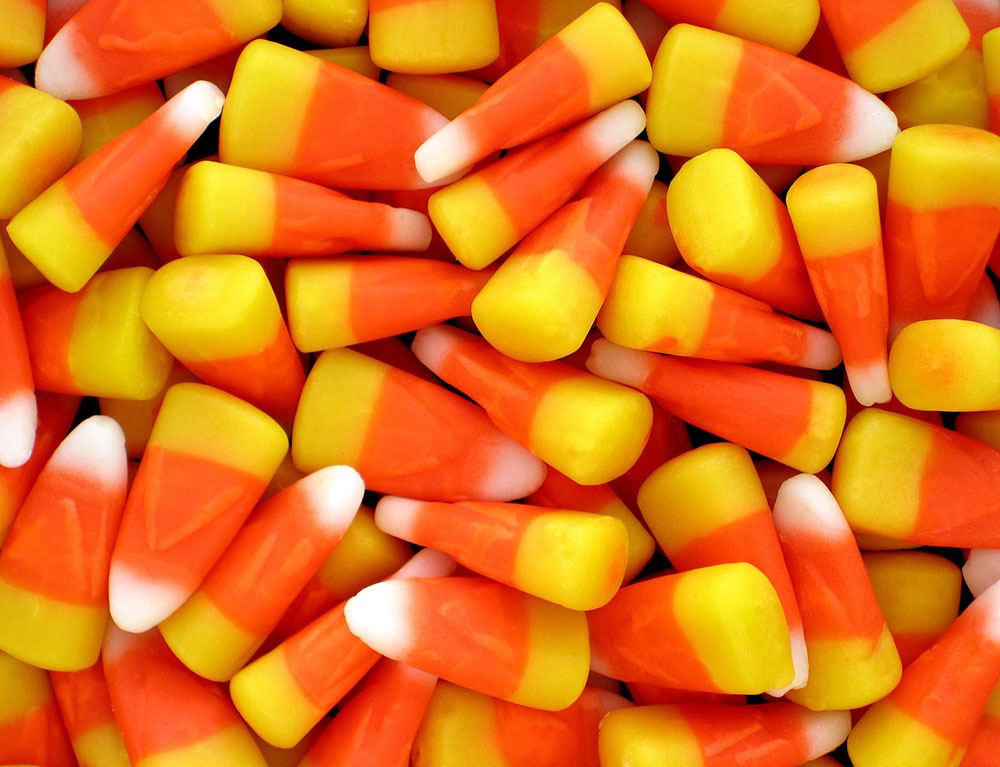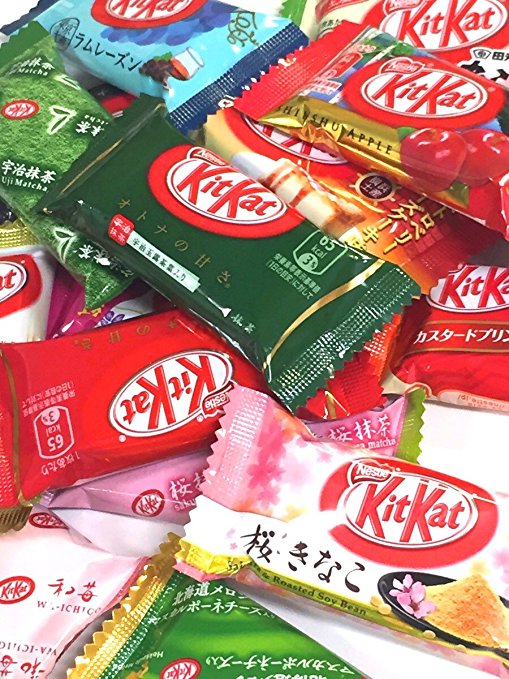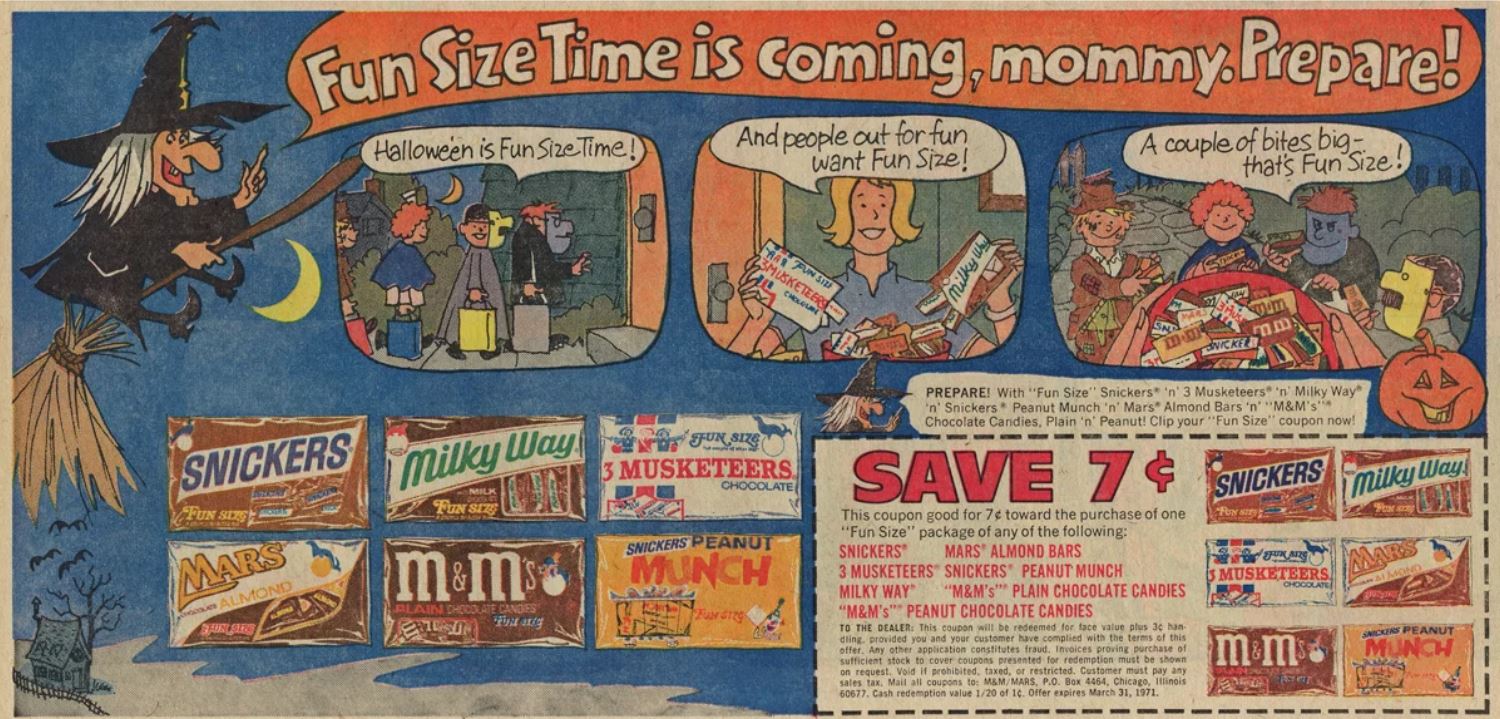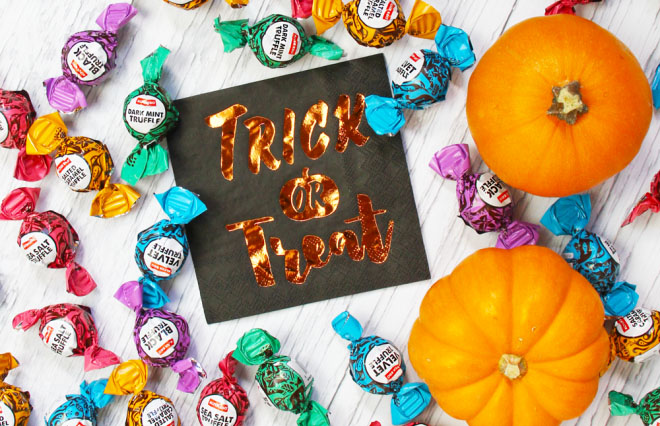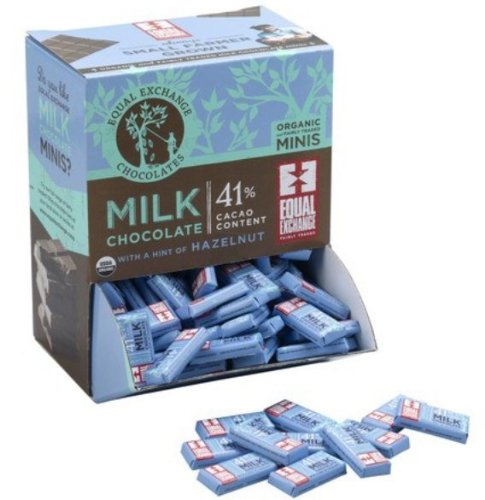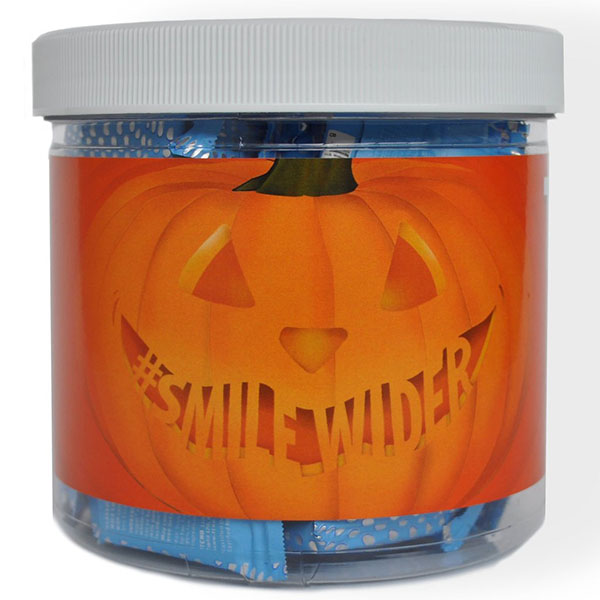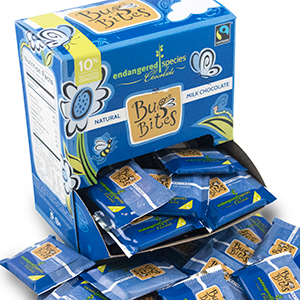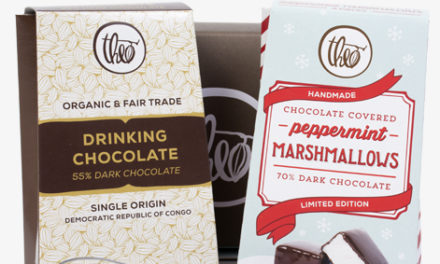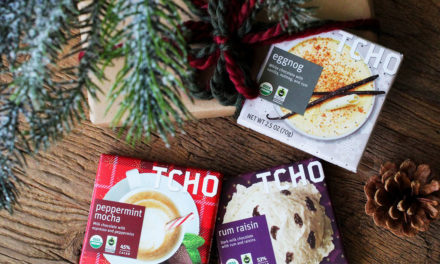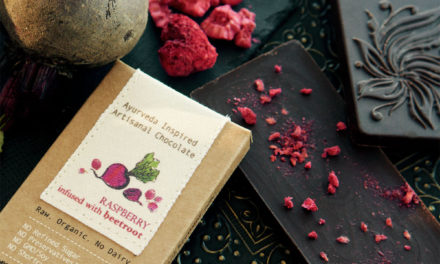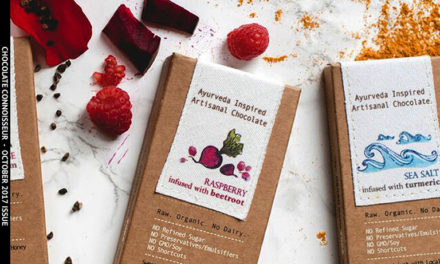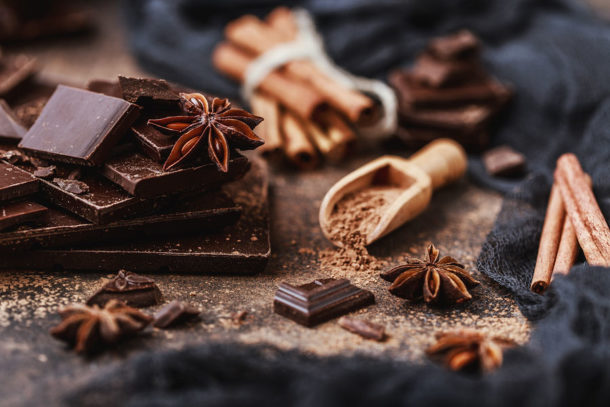It’s time to prepare for the arrival of little ghosts and goblins on our doorsteps, their calls for candy filling the autumn night air. This year here in America, we might see more trick or treaters than ever before, if the estimated total dollars to be spent on Halloween for 2017 rings true. Let’s take a moment to look at Halloween in the United States, specifically, what the numbers show, and then what we wish they’d show as chocolate connoisseurs.
Halloween Chocolate Billions
The National Retail Federation (NFR) estimates a total spending record of $9.1 billion, up from last year’s already crazy $8.4 billion tally. But the craziest part? Consumers will likely spend $2.7 billion of that amount on candy alone.
The NFR also tells us that chocolate is hands-down (or is it hands out) America’s favorite trick-or-treat goodie, with candy corn placing a close second.
I wonder why “Chicken Feed” never caught on?!
Fun Fact: candy corn was invented in the late 1880s by George Renninger. His employer, Wunderlee Candy Company, began mass-producing the sweet treat in the early 1900s. Here’s the fun part — originally, Wunderlee called it Chicken Feed, since the white, orange and yellow stripes were reminiscent of a corn kernel fed to chickens. The box featured a rooster logo and the slogan “Something worth crowing for.” True story.
But back to the most popular Halloween treat… Of all the candy purchased this holiday, chocolate will account for 72% of those sweet treats.
Fun fact: Dentists claim chocolate washes off our teeth easier than other types of candy.
Which is good because I’m not gonna lie, as much as I love quality chocolate, sometimes I’ll raid my kids’ Halloween stashes and go for any kind of chocolate, and if I’m lucky, I’ll score a Kit Kat.
Fun fact: Over time, Nestle sold nearly 300 different flavors of Kit Kat in Japan, including wasabi, sake, cherry blossom and purple sweet potato.
When I speak of quality chocolate, you as a connoisseur already know what I mean, but to sum it up, it includes ethically grown and traded cacao, good harvesting and manufacturing processes, and the use of quality ingredients through and through… of which most, if not all, Halloween candy falls short.
Unfortunately, most of America still buys this chocolate, and in 2016, Influencer surveyed 40,000 people to find the most popular Halloween candy in each state. For all the details, check out the original article here:
https://www.influenster.com/article/americas-favorite-halloween-candy-state-by-state
The survey showed Reese’s Peanut Butter Cup, Kit Kat and Butterfinger as favorites, although candy corn scored top choice in the greatest number of states. This matches up with other findings I’ve dug up for the purpose of this article, including the list below which breaks down America’s favorite chocolate overall, calculated by total sales at Halloween.
I think you’ll quickly see a pattern here, namely that the top ten chocolate favorites belong to just two chocolate companies:
- Reese’s Peanut Butter Cups – Hershey
- M&M’s – Mars
- Snickers – Mars
- Hershey’s – Hershey
- Kit Kat – Hershey
- Twix – Mars
- Three Musketeers – Mars
- Hershey’s Cookies – Hershey
- Milky Way – Mars
- Almond Joy – Hershey
Fun Fact: Mars began distributing mini-candy bars in 1961, specifically targeting trick-or-treaters, and they take credit for the phrase “fun size,” created in 1968. The first fun size treats were Snickers and Milky Way.
Given how Mars and Hershey sell the most chocolate to our children at Halloween, it makes sense to check in and ask how they’re treating (or tricking?) other children in the world. Specifically – slave labor issues. It’s no secret both companies, along with Nestle, have been criticized in the past for using cocoa beans from areas that employ child slave labor.

Big Chocolate, Little Scores
No Ethics Required
In fact, in 2016, class actions against the three companies, claiming they should disclose on their packaging that their cocoa beans were harvested by child slaves, were dismissed by two federal judges. The judges determined that while the use of cocoa beans from areas that involve slave labor is an ethical question, the law doesn’t require disclosure on their product labels.
Chew on that bizarre ruling for a moment… a company can sell you an unethically-created product, with no obligation whatsoever to tell you of the ethical shortcomings.
Thankfully, not-for-profit membership organizations like Green America exist, working hard to create a socially just and environmentally sustainable society. Their report card, seen above, rates the six biggest chocolate companies on how they’re addressing sustainability, particularly the child labor issue.
For those who would prefer to boycott typical Halloween candy all together, slave-free artisan chocolate companies will gladly fill the gap, including notables such as –
- Alma Chocolate
- Alter Eco
- Askinosie
- Chocolate Troubadour
- Dandelion
- Dark Forest Chocolate
- Divine Chocolate Co.
- Endangered Species
- Equal Exchange
- Grocer’s Daughter Chocolate
- La Iguana Chocolate
- Madecasse
- Mayan Monkey
- Montezuma’s Chocolates
- Plamil Organic Chocolate
- Purdy’s
- Pure Lovin’ Chocolat
- Rapunzel Pure Organics
- Ritual Chocolate
- Sweet Earth Chocolates
- Sweet Riot
- Taza
- Terra Nostra Organic
- TCHO
- Theo Chocolate
- TONY’S CHOCOLONELY
- Vivani Chocolate
- Vosges
- Wei of Chocolate
- Zotter
Alter Eco, an ethical and healthier Halloween alternative
Companies like Alter Eco and TCHO, and Endangered Species are even starting to create trick-or-treating-friendly items as pictured below. Certainly more expensive than a giant bag of Reeses Peanut Butter Cups, but as we’re seeing on multiple fronts, the true cost of big chocolate doesn’t completely translate into that receipt at the grocery store. Going the extra mile for Alter Eco or one of the others may prove well worth it in the long run.
Because for some of us, along with all the fun festivities on offer this holiday, better chocolate means a better Halloween!


